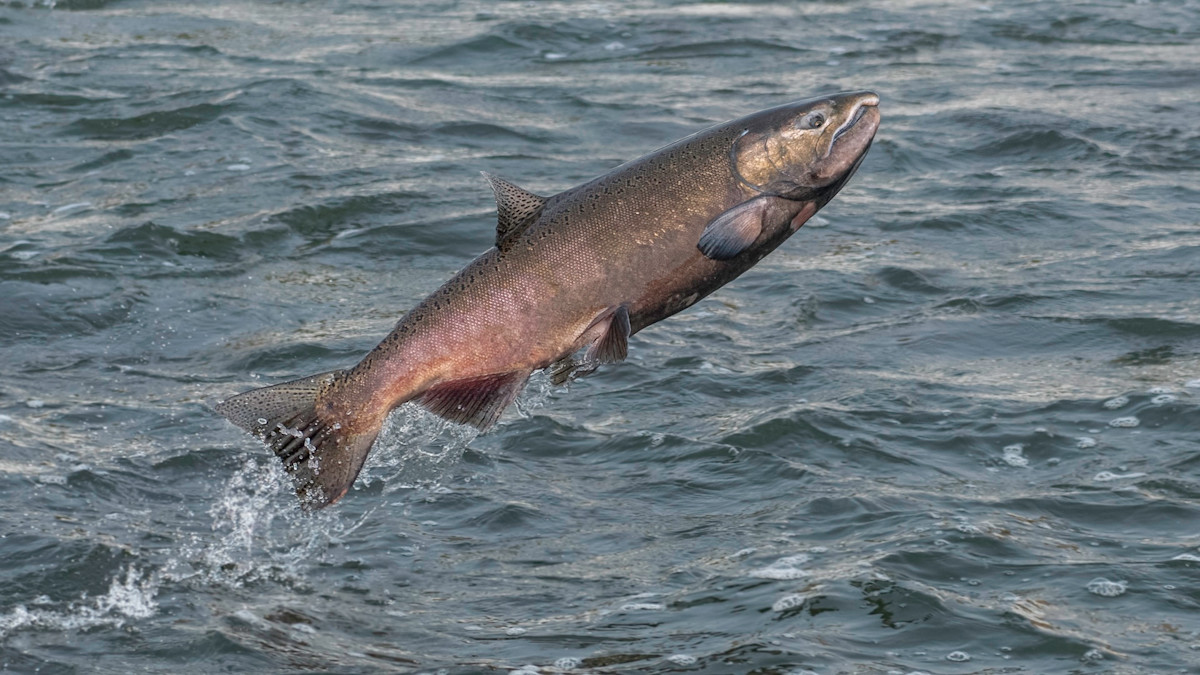
A petition earlier this year by the Seattle-based Wild Fish Conservancy to list select Chinook (AKA king) salmon populations in the Gulf of Alaska as “threatened” or “endangered” species is gaining traction. In January, the nonprofit submitted a document to the National Oceanic and Atmospheric Administration (NOAA) highlighting declining king populations across southeast Alaska and the south side of the Alaskan Peninsula. It was the first step in the citizen-initiated process of getting a species listed under the Endangered Species Act (ESA).
Emma Helverson, executive director of the Wild Fish Conservancy, explains the process: “Essentially, you just need to provide the bare minimum data to show that these populations need a closer look. The ESA really empowers the public, and any citizen can bring forward a petition and ask the government to review it.”
Helverson’s team, including biologist Conrad Gowell, put together the 67-page report using publicly available data from the Alaska Department of Fish and Game (ADFG) and NOAA.
“We’re just presenting, for the most part, raw data,” Gowell said. “All these rivers were continuing to miss escapement year after year.”
Escapement is the target number of returning spawning salmon on any given river and is set by ADFG. In the report, the team points to numerous reasons for the decline, including changing ocean conditions, habitat loss, and predation on the species—from both animals and people.
NOAA and the National Marine Fisheries Service (NMFS) reviewed the petition and decided that there was substantial basis to warrant a more in-depth review of Gulf-of-Alaska kings. Now, the federal agencies have one year (starting when the petition was submitted) to conduct a detailed assessment, including breaking down kings into geographically and genetically distinct subpopulations to determine which ones might be at risk of extinction.
The state of Alaska, however, is not happy with the petition or NOAA’s decision to look into the issue more closely. In a press release, Commissioner Doug Vincent-Lang wrote a scathing critique: “[The petition] is rife with significant factual errors, omits important data that are widely available, and does not accurately describe the status of Chinook salmon in Alaska. It is mind-boggling that NMFS could make a positive finding based on cherry-picked data to support a predetermined viewpoint. I am concerned that this decision will encourage more frivolous petitions in the future.”
And while NOAA concurs that the document contained a plethora of errors, they still determined that Alaskan kings are in dire enough condition to potentially warrant action. “We found that the information present in the petition contained numerous factual errors, omissions, incomplete references, and unsupported assertions and conclusions,” the federal agency wrote in its decision notice. “Still, we concluded that the petition contained enough information for a reasonable person to conclude that the petitioned action [ESA listing] may be warranted.”
As with anything having to do with salmon, however, it can be difficult to isolate the biology from the politics. It’s generally agreed that king populations are not doing well across the state. However, the commercial fishing industry is worried that an ESA listing could restrict harvest opportunities, not only on kings but also on other species like sockeye and pinks that have concurrent fishing seasons. The state is also concerned that a listing would turn management over to the feds, making it harder for ADFG to do their job and work with fishing communities on the local, individual level.
Helverson and the Wild Fish Conservancy recognize these concerns, but also note that a listing wouldn’t have as dramatic of an impact as the media is generally portraying. “There’s a lot of misinformation about the ESA process, and that this is going to shut down every fishery in the Gulf of Alaska. This idea that there won’t be any fishing is an overstatement and fearmongering. We still have fishing on stocks that are listed under ESA [in the Lower-48, though Incidental Take Permits]. That’s where the communities need to come together to work on plans.”
Aside from the outspoken commercial-fishing industry, though, a lot of local Alaskans recognize that action needs to be taken to protect king populations—according to Helverson. In just one generation, people have watched king runs crash, and that’s not a legacy they want to leave for their kids and subsequent generations.
Willard Lind, a native resident in Chignik, Alaska, tells an all-too-common story in an interview with NPR: “When I was a kid, there was a place we called ‘Shallow Water’ in the Chignik River, and that place used to be loaded with kings. Holy cow, they’d be swimming all over the place. But nowadays, you don’t see one king in that Shallow-Water hole anymore. I’m all for the petition to stop these king-fishers.”
Currently, NOAA is in the process of reviewing all available data to determine what actions might be appropriate. There is a public comment period open now through September 6th.




